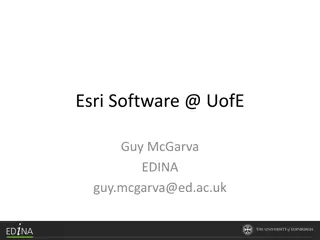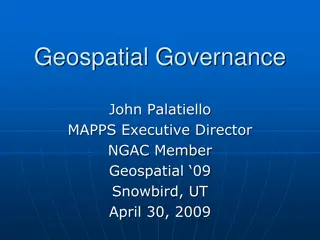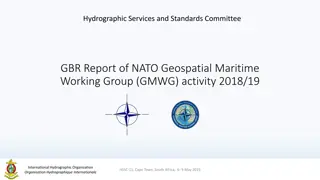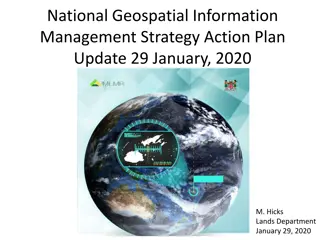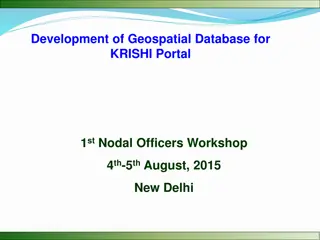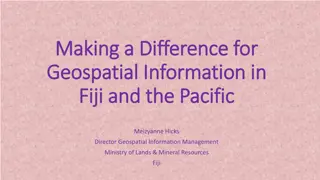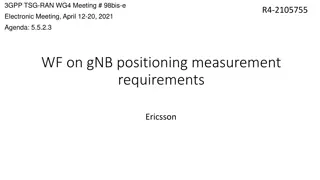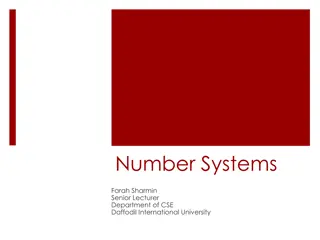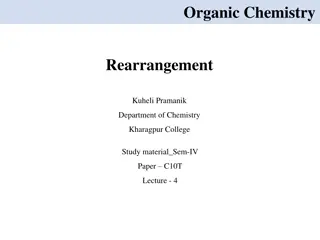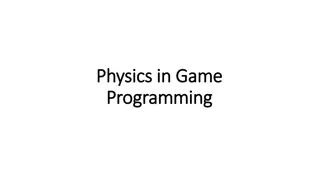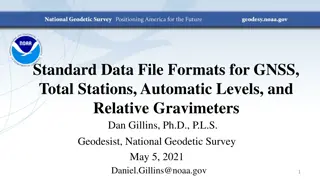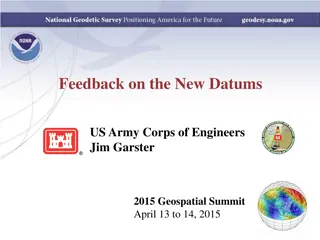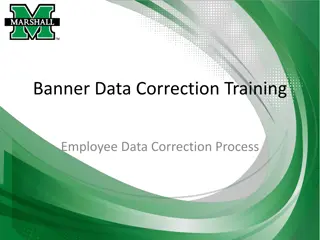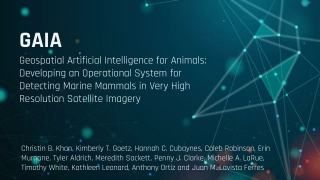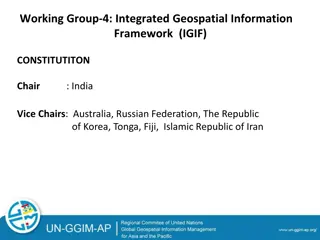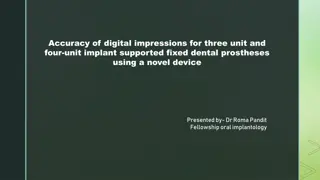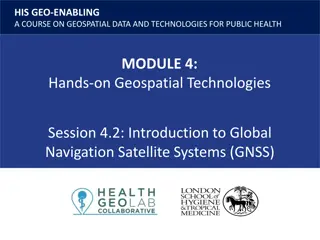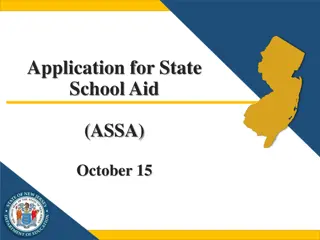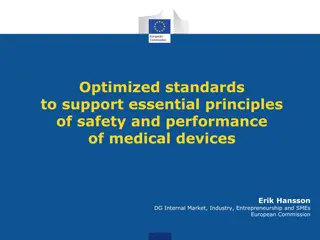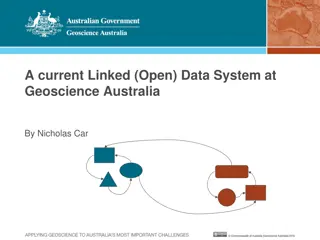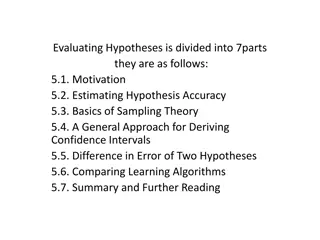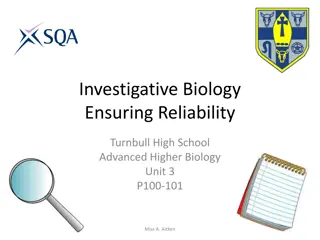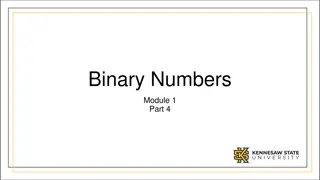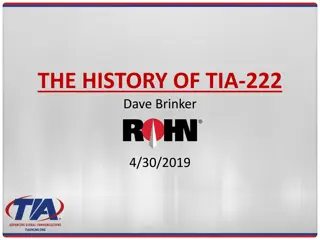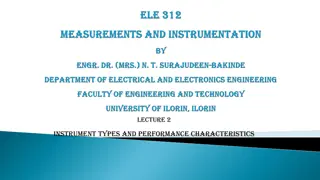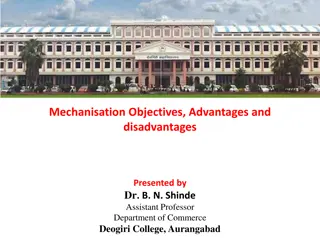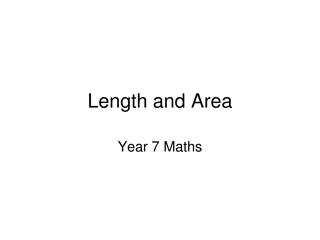Evolution of ASPRS Positional Accuracy Standards for Geospatial Data
New technological advancements have prompted the need for updated ASPRS positional accuracy standards for digital geospatial data. Legacy standards from the 1990s are no longer sufficient given the shift towards modern mapping technologies. The new era of mapping involves factors like camera calibration, CCD quality, GPS signal quality, and processing software capabilities influencing map accuracy. These changes reflect a more sophisticated approach to geospatial data accuracy in a rapidly evolving digital environment.
Download Presentation

Please find below an Image/Link to download the presentation.
The content on the website is provided AS IS for your information and personal use only. It may not be sold, licensed, or shared on other websites without obtaining consent from the author. Download presentation by click this link. If you encounter any issues during the download, it is possible that the publisher has removed the file from their server.
E N D
Presentation Transcript
Understanding The new ASPRS Positional Accuracy Standards for Digital Geospatial Data Dr. Qassim Abdullah Chief Scientist and Associate Woolpert, Inc. National Spatial Reference System (NSRS) Modernization Industry Workshop NOAA s National Geodetic Survey (NGS) May 7-8, 2018
The ASPRS Positional Accuracy Standards for Digital Geospatial Data of 2014 2
New Standard for a New Era Motivation Behind the New Standard: Legacy map accuracy standards, such as the ASPRS 1990 standard and the NMAS of 1947, are outdated. (over 30 years since ASPRS1990 was written) Many of the data acquisition and mapping technologies that these standards were based on are no longer used. More recent advances in mapping technologies can now produce better quality and higher accuracy geospatial products and maps. Legacy map accuracy standards were designed to deal with plotted or drawn maps as the only medium to represent geospatial data. 3
New Standard for a New Era Within the past two decades (during the transition period between the hardcopy and softcopy mapping environments), most standard measures for relating GSD and map scale to the final mapping accuracy were inherited from photogrammetric practices using scanned film. New mapping processes and methodologies have become much more sophisticated with advances in technology and advances in our knowledge of mapping processes and mathematical modeling. Mapping accuracy can no longer be associated with the camera geometry and flying altitude alone (focal length, xp, yp, B/H ratio, etc.). 4
New Standard for a New Era New map accuracy is influenced by many factors such as: the quality of camera calibration parameters; quality and size of a Charged Coupled Device (CCD) used in the digital camera CCD array; amount of imagery overlap; quality of parallax determination or photo measurements; quality of the GPS signal; quality and density of ground controls; quality of the aerial triangulation solution; capability of the processing software to handle GPS drift and shift; capability of the processing software to handle camera self-calibration, the digital terrain model used for the production of orthoimagery. 5
New Standard for a New Era These factors can vary widely from project to project, depending on the sensor used and specific methodology. For these reasons, existing accuracy measures based on map scale, film scale, GSD, c-factor and scanning resolution no longer apply to current geospatial mapping practices. Elevation products from the new technologies and active sensors such as lidar, UAS, and IFSAR are not considered by the legacy mapping standards. New accuracy standards are needed to address elevation products derived from these technologies. 6
The New Standard Highlights Sensor agnostic, data driven: Positional Accuracy Thresholds which are independent of published GSD, map scale or contour interval It is All Metric! Unlimited Horizontal Accuracy Classes: Additional Accuracy Measures Aerial triangulation accuracy, Ground controls accuracy, Orthoimagery seam lines accuracy, Lidar relative swath-to-swath accuracy, Recommended minimum Nominal Pulse Density (NPD) Horizontal accuracy of elevation data, Delineation of low confidence areas for elevation data Required number and spatial distribution of QA/QC check points based on project area 7
The New ASPRS Standard is sensor agnostic data driven, Why? Focal Length (mm) Flying Altitude (ft) Resulting GSD (cm) Camera ADS80 62.77 2,363 7.5 DMC IIe 230 92.00 4,042 7.5 UltraCAM Falcon Prime 100.00 4,100 7.5 UltraCAM Eagle 210 210.00 9,937 7.5 8
New Standard Highlights Horizontal Accuracy Standards for Geospatial Data (unlimited horizontal accuracy classes) Horizontal Accuracy at 95% Confidence Level (cm) Horizontal Accuracy Class Orthoimagery Mosaic Seamline Mismatch (cm) RMSEx and RMSEy (cm) RMSEr (cm) X-cm X 1.41*X 2.45*X 2*X 2+ ????? 2 ????? = Radial RMSE = Circular RMSE = Two- dimensional RMSE of X & Y ?????= ????? 9
Recommended Horizontal Accuracy Class RMSEx and RMSEy (cm) Common Orthoimag ery Pixel Sizes Orthoimage RMSEx and RMSEy in terms of pixels Recommended use 1.3 1-pixel Highest accuracy work Standard Mapping and GIS work Visualization and less accurate work Highest accuracy work Standard Mapping and GIS work Visualization and less accurate work Highest accuracy work Standard Mapping and GIS work Visualization and less accurate work Highest accuracy work Standard Mapping and GIS work Visualization and less accurate work Highest accuracy work Standard Mapping and GIS work Visualization and less accurate work Recommended Digital Orthoimagery Accuracy Examples for Current Large and Medium Format Metric Cameras 2.5 2-pixels 1.25 cm 3.8 3-pixels 2.5 1-pixel 5.0 2-pixels 2.5 cm 7.5 3-pixels 5.0 1-pixel 10.0 2-pixels 5 cm 15.0 3-pixels 7.5 1-pixel 15.0 2-pixels 7.5 cm 22.5 3-pixels 15.0 1-pixel 30.0 2-pixels 15 cm 10 10 45.0 3-pixels
Horizontal Accuracy Standards for Geospatial Data 1. Aerial triangulation results should be twice as accurate as the generated products: Ortho and planimetric maps ONLY: RMSEx(AT) or RMSEy(AT) = * RMSEx(Map) or RMSEy(Map) RMSEz(AT) = RMSEx(Map) or RMSEy(Map)of orthoimagery For ortho/planimetric maps and elevation maps: RMSEx(AT), RMSEy(AT) or RMSEz(AT) = * RMSEx(Map), RMSEy(Map)or RMSEz(DEM) * according to the ASPRS Positional Accuracy Standards for Digital Geospatial Data 11
Horizontal Accuracy Standards for Geospatial Data 2. Control points for aerial triangulation should be twice as accurate as aerial the triangulation: For ortho and planimetric maps ONLY: RMSEx or RMSEy = 1/4 * RMSEx(Map) or RMSEy(Map), RMSEz = 1/2 * RMSEx(Map) or RMSEy(Map) For ortho/planimetric maps and elevation maps: RMSEx, RMSEy or RMSEz= 1/4 * RMSEx(Map), RMSEy(Map) or RMSEz(DEM) * according to the ASPRS Positional Accuracy Standards for Digital Geospatial Data 12
Best Practices in Determining Product Accuracy* Check points should be THREE as accurate as the generated products*: For a project with ortho and planimetric maps accuracy of 24- cm or 0.79 ft., the check point should be accurate to: RMSEx or y (check points) = 24-cm/3 = 8-cm or 0.26 ft. * according to the ASPRS Positional Accuracy Standards for Digital Geospatial Data 13
New Standard Highlights Vertical Accuracy Standards for Geospatial Data (unlimited vertical accuracy classes) Absolute Accuracy Relative Accuracy (where applicable) Vertical Accuracy Class Within- Swath Hard Surface Repeatability (Max Diff) (cm) Swath-to-Swath Non-Vegetated Terrain (RMSDz) (cm) Swath-to-Swath Non-Vegetated Terrain (Max Diff) (cm) RMSEz Non- Vegetated (cm) NVA at 95% Confidence Level (cm) VVA at 95th Percentile (cm) X-cm X 1.96*X 3.00*X 0.60*X 0.80*X 1.60*X 14
Vertical Accuracy/Quality Examples for Digital Elevation Data Absolute Accuracy Relative Accuracy (where applicable) Within- Swath Hard Surface Repeatability (Max Diff) (cm) (cm) 0.6 0.8 1.5 3 6 9 12 20 26.7 40 53.3 60 200 266.7 Swath-to- Swath Non-Veg Terrain (RMSDz) Swath-to- Swath Non-Veg Terrain (Max Diff) (cm) 1.6 4 8 16 24 32 53.3 106.7 160 533.3 NVA at 95% Confidence Level (cm) RMSEz Non- Vegetated (cm) VVA at 95th Percentile (cm) Vertical Accuracy Class 1-cm 2.5-cm 5-cm 10-cm 15-cm 20-cm 33.3-cm 66.7-cm 100-cm 333.3-cm 1.0 2.5 5.0 10.0 15.0 20.0 33.3 66.7 100.0 333.3 2.0 4.9 9.8 19.6 29.4 39.2 65.3 130.7 196.0 653.3 3 7.5 15 30 45 60 100 200 300 1000 2 4 8 12 16 80 15
Examples on Vertical Accuracy and Recommended Lidar Point Density for Digital Elevation Data according to the new ASPRS 2014 standard Recommende d Minimum NPD (pts/m2) Absolute Accuracy NVA at 95% Confidence Level (cm) Vertical Accuracy Class Recommende d Maximum NPS7 (m) RMSEz Non-Vegetated (cm) 1-cm 1.0 2.0 20 0.22 2.5-cm 2.5 4.9 16 0.25 5-cm 5.0 9.8 8 0.35 10-cm 10.0 19.6 2 0.71 15-cm 15.0 29.4 1 1.0 20-cm 20.0 39.2 0.5 1.4 33.3-cm 33.3 65.3 0.25 2.0 66.7-cm 66.7 130.7 0.1 3.2 100-cm 100.0 196.0 0.05 4.5 333.3-cm 333.3 653.3 0.01 10.0 10-cm with 2 pts/m2 is the QL2 LiDAR standard for the nationwide 3DEP 16
Horizontal accuracy requirements for elevation data according to ASPRS2014 Standards Photogrammetric elevation data: the horizontal accuracy equates to the horizontal accuracy class that would apply to planimetric data or digital orthoimagery produced from the same source imagery, using the same aerial triangulation/INS solution. Lidar elevation data: use the following formula: 2 tan(??? ?????) 0.55894170 ???? ?????????? ?????2+ ????? ?????????? ????? ????? = ? ?????? ???????? See Page A7, Section 7.5 Horizontal Accuracy Requirements for Elevation Data 17
Horizontal accuracy requirements for Lidar data What to do? Trust the manufacturer estimate for horizontal accuracy assuming you are meeting the vertical accuracy Use the ASPRS2014 estimation of horizontal accuracy for lidar Altitude (m) Positional RMSEr (cm) Altitude (m) Positional RMSEr (cm) 500 13.1 3,000 41.6 1,000 17.5 3,500 48.0 1,500 23.0 4,000 54.5 Most QL2 flown at this altitude 2,000 29.0 4,500 61.1 2,500 35.2 5,000 67.6 18
Examples on Vertical Accuracy and Recommended Lidar Point Density for Digital Elevation Data According to the New ASPRS 2014 Standard Absolute Accuracy Relative Accuracy (where applicable) Swath-to- Swath Non-Veg Terrain (RMSDz) (cm) Swath-to- Swath Non-Veg Terrain (Max Diff) (cm) NVA at 95% Confidence Level (cm) Within-Swath Hard Surface Repeatability (Max Diff) (cm) Vertical Accuracy Class RMSEz Non- Vegetated (cm) VVA at 95th Percentile (cm) 1-cm 1.0 2.0 3 0.6 0.8 1.6 2.5-cm 2.5 4.9 7.5 1.5 2 4 5-cm 5.0 9.8 15 3 4 8 19.6 30 10-cm 10.0 6 8 16 19
Can ASPRS standards be used for UAS products? Required accuracy for the products: Ortho Accuracy: 4 cm (RMSEx or y) DSM Accuracy: 4 cm (RMSEz) ASPRS Standards Requires: RMSEx, RMSEy or RMSEz (ground control)= * RMSEx(Map), RMSEy(Map) or RMSEz(DEM) Ground Control for AT accuracy = 1 cm (RMSEx,y,z) Check points for QC accuracy = 1.33 cm 20
Thank you! Qassim Abdullah: qassim.abdullah@woolpert.com Mapping_matters@asprs.org



